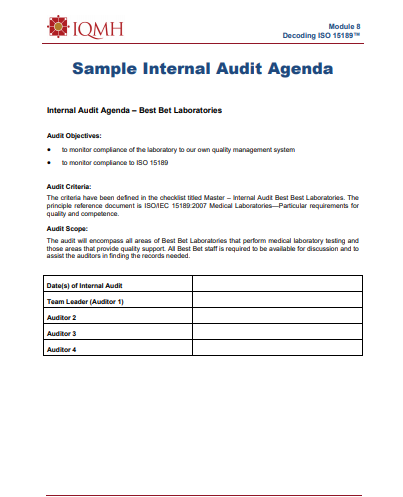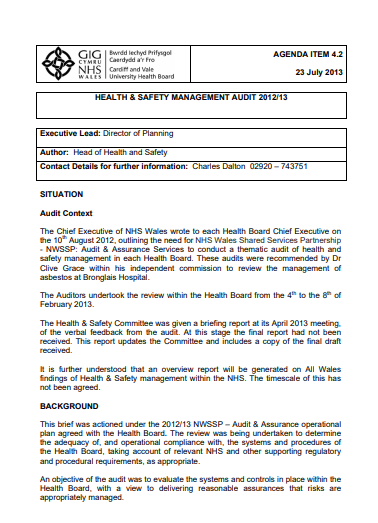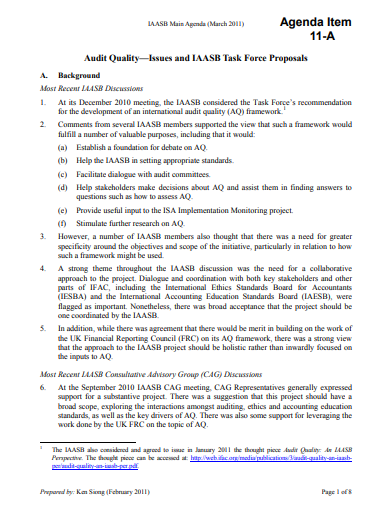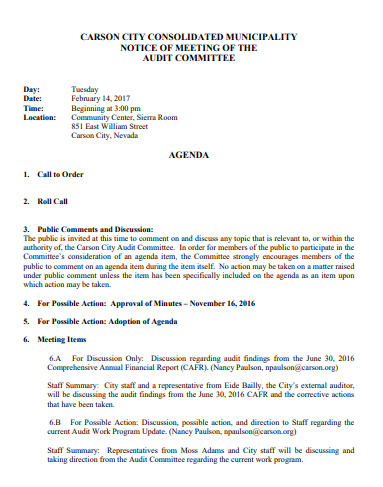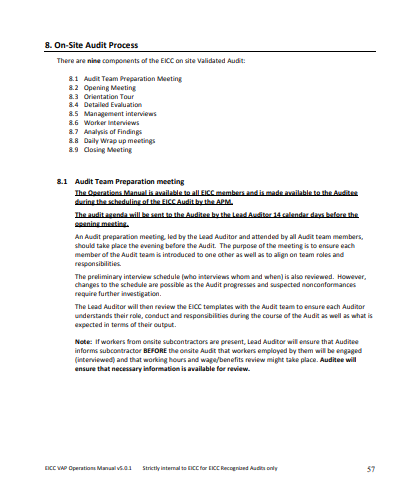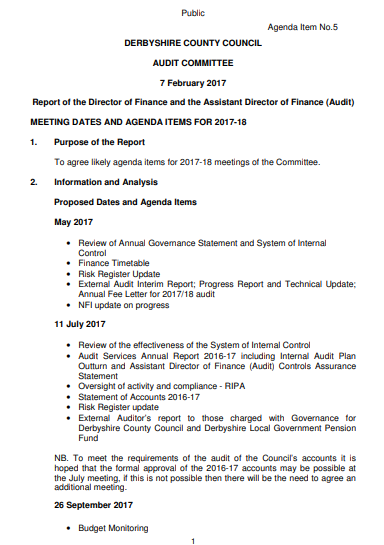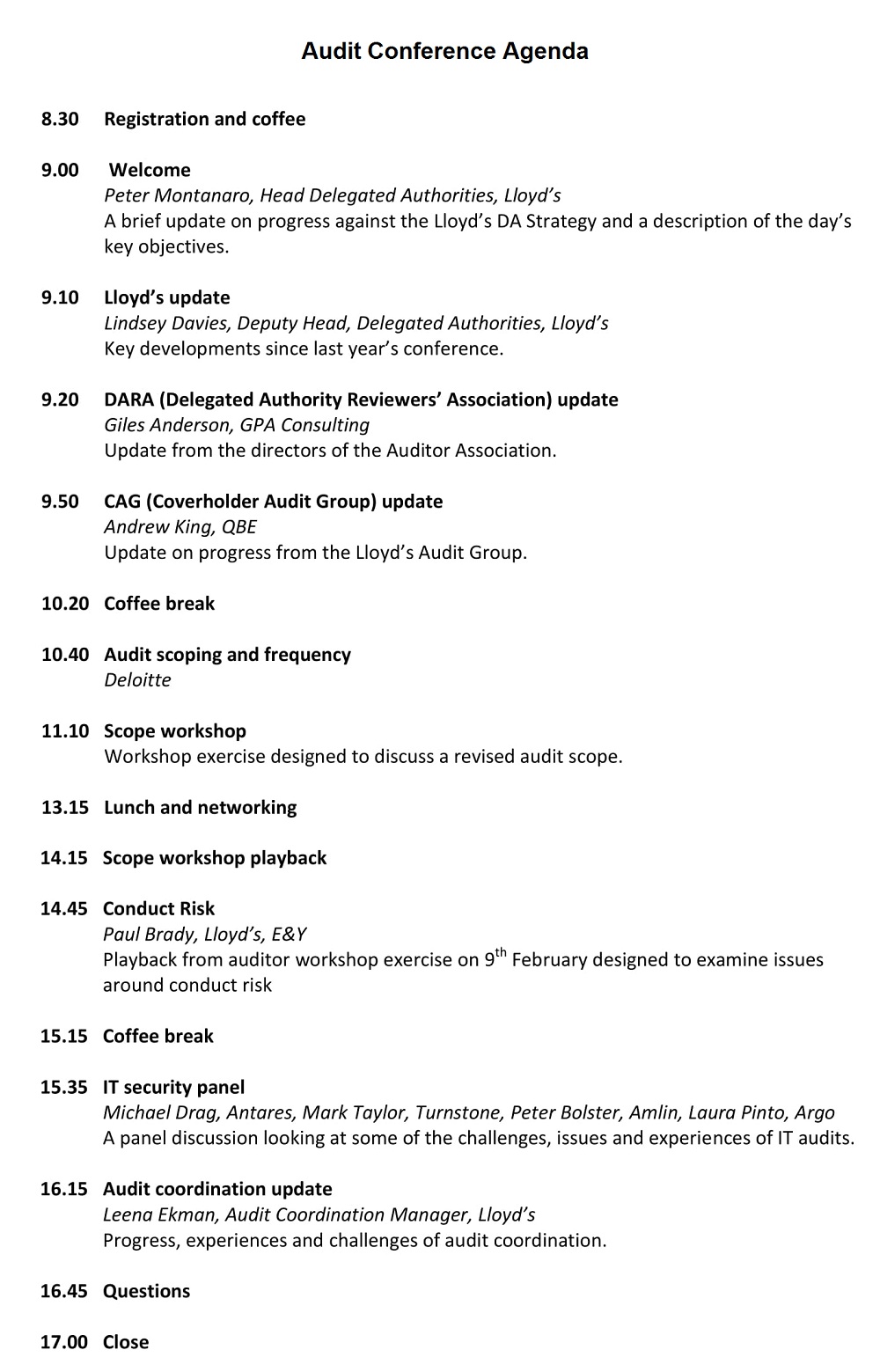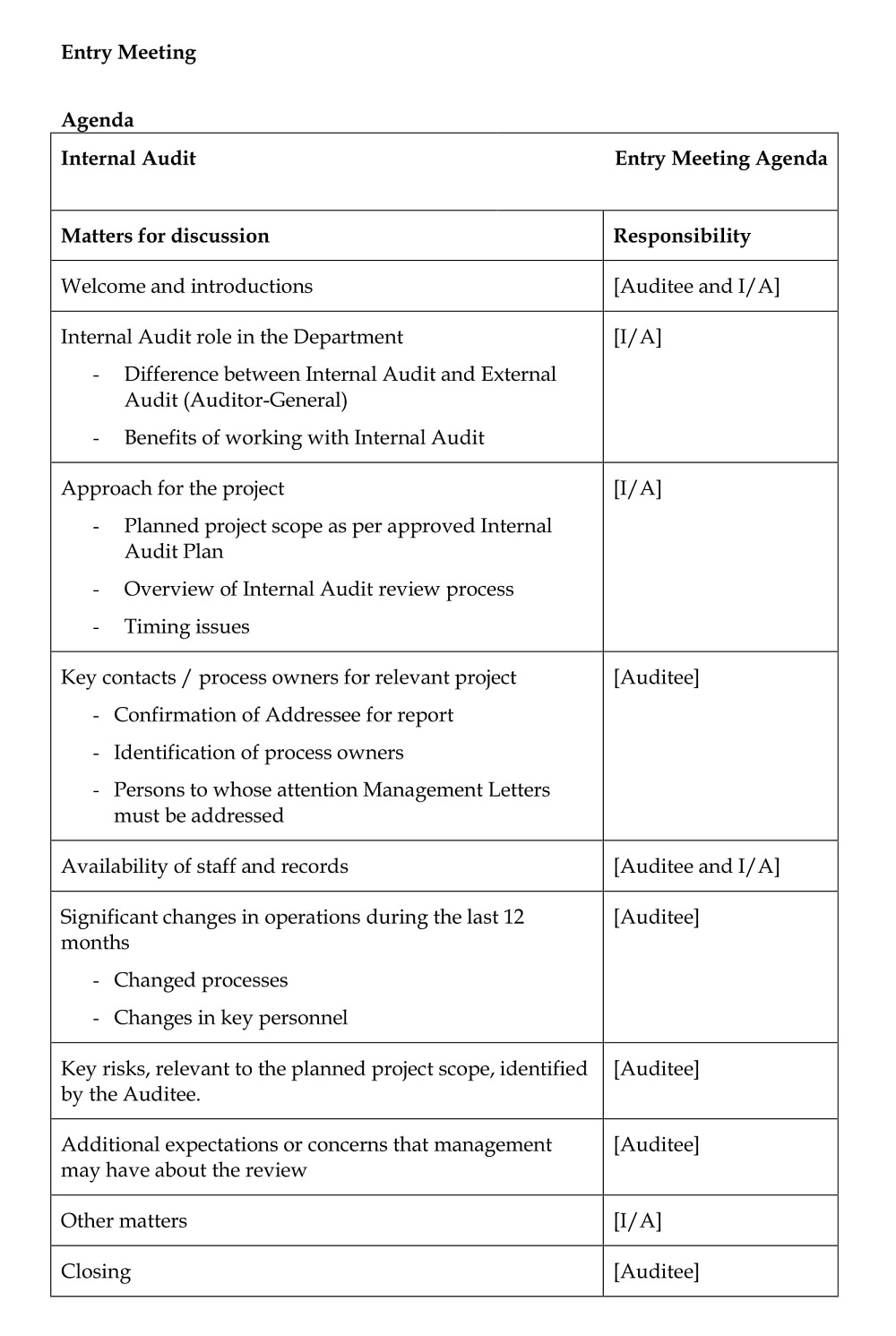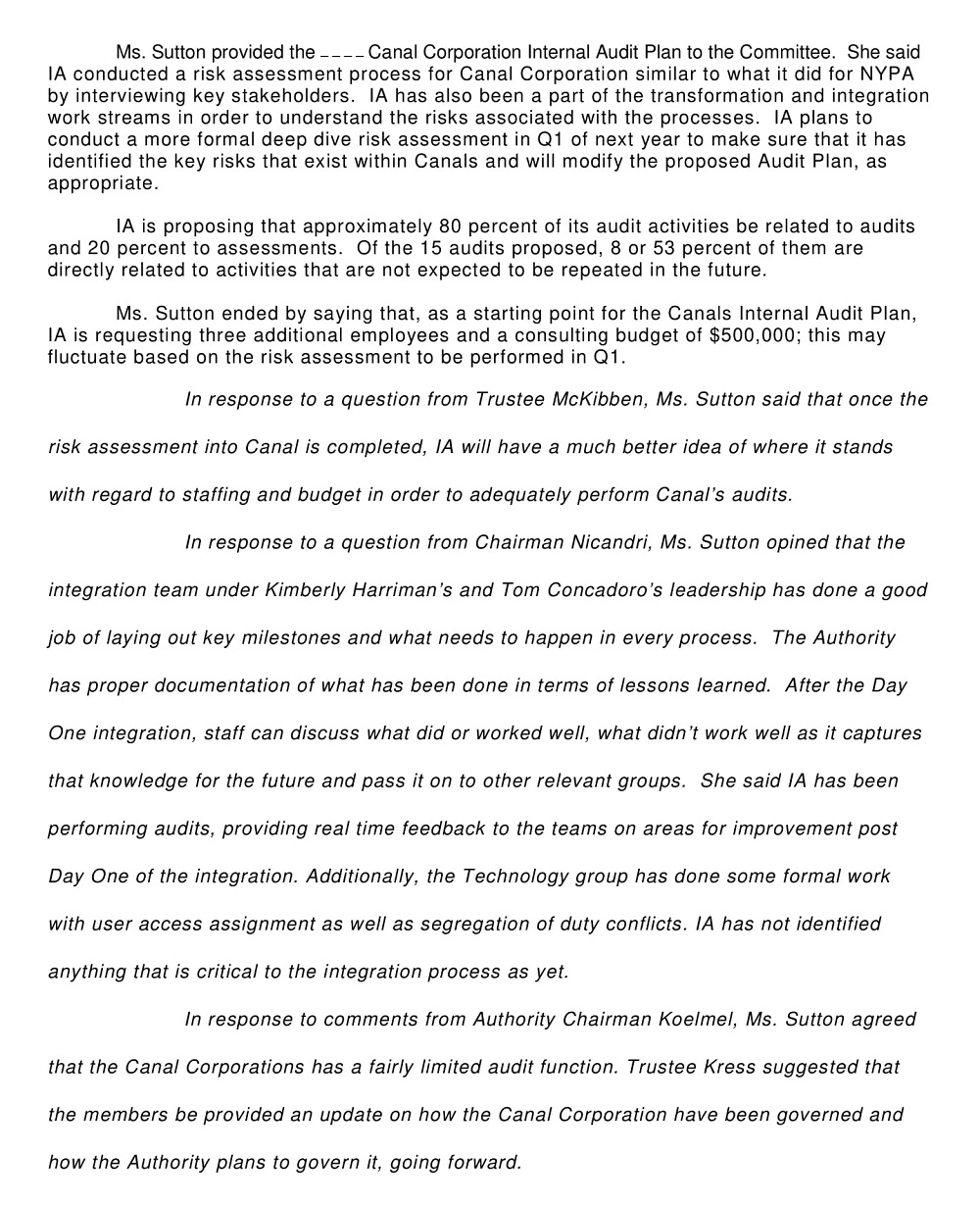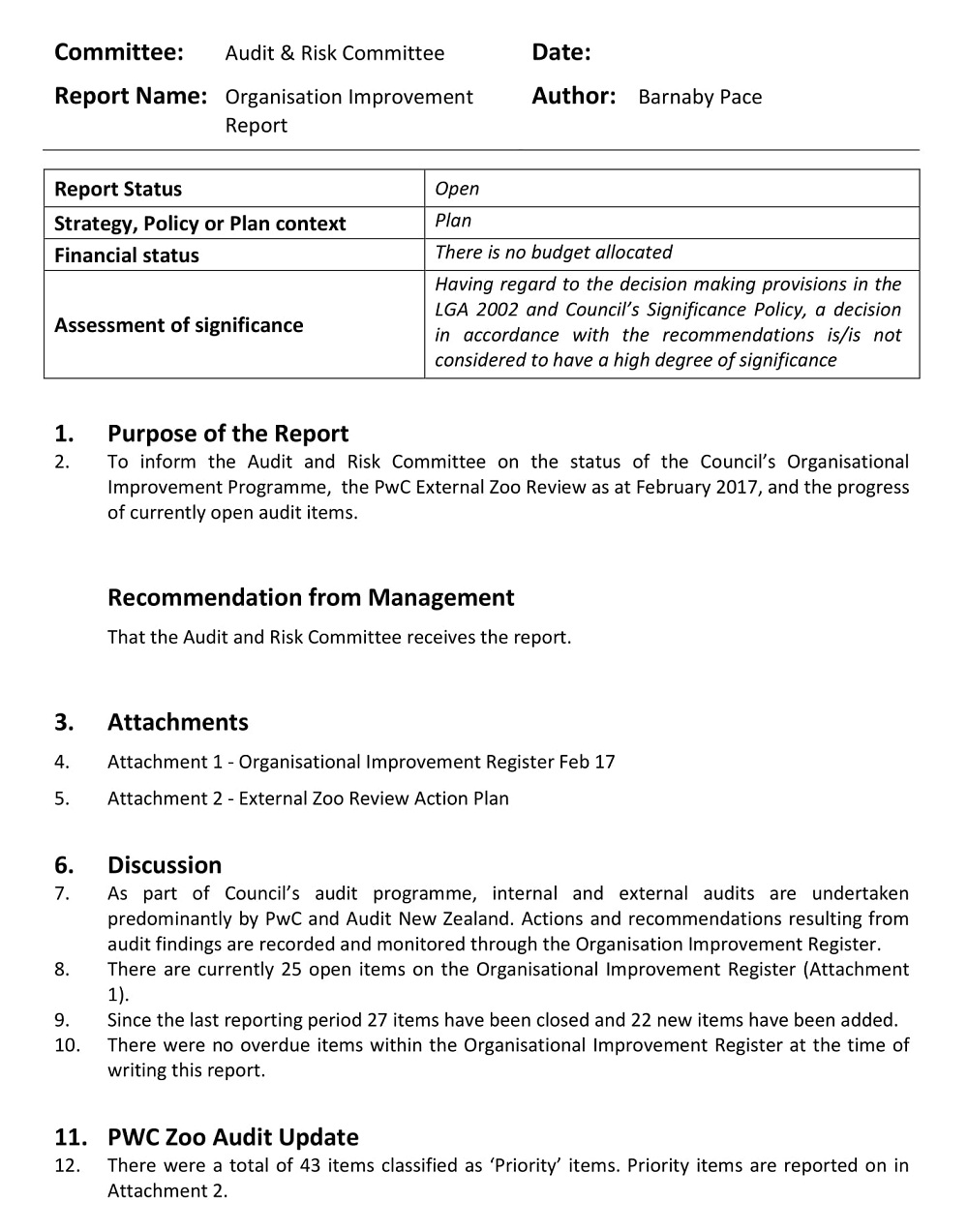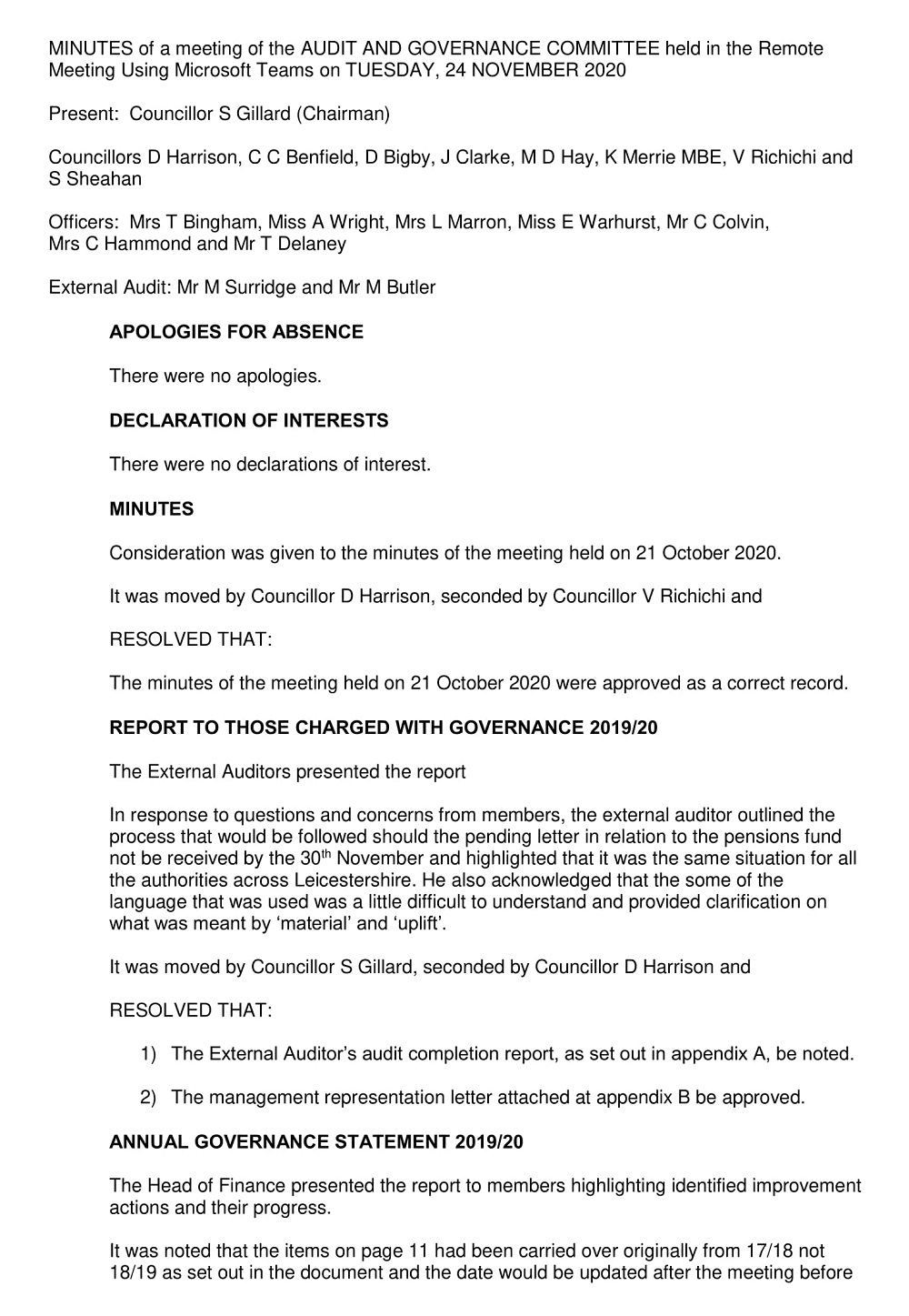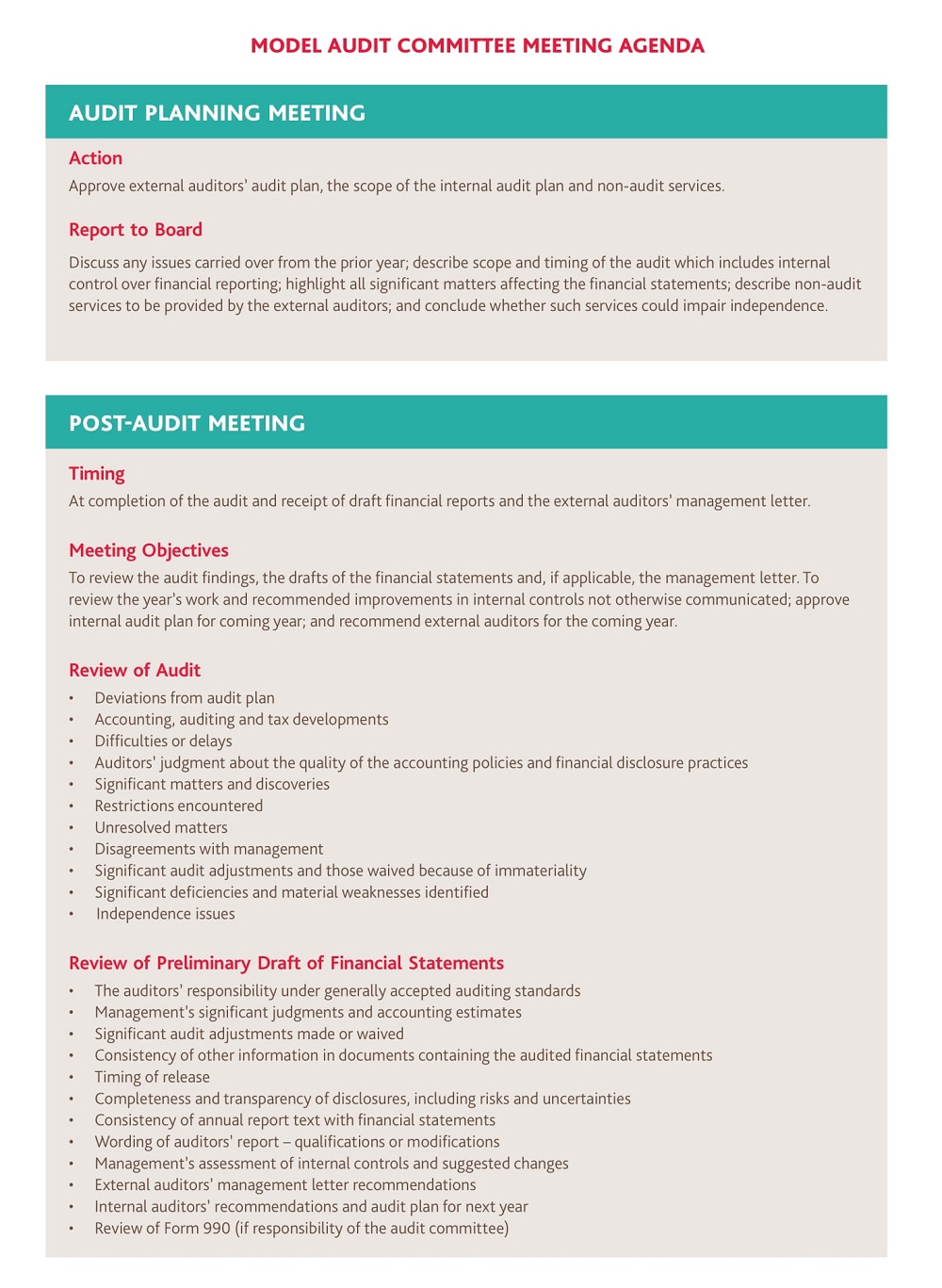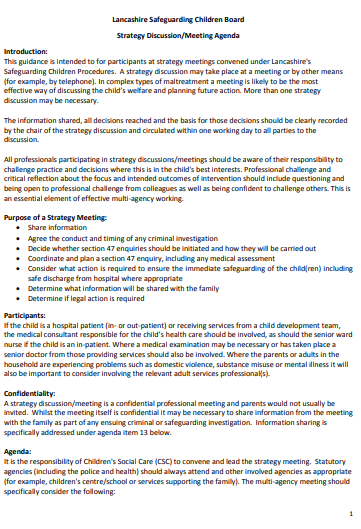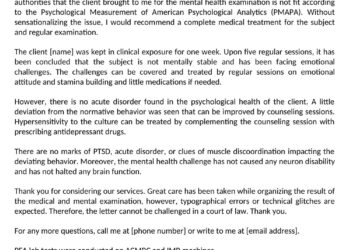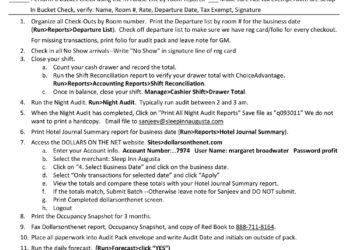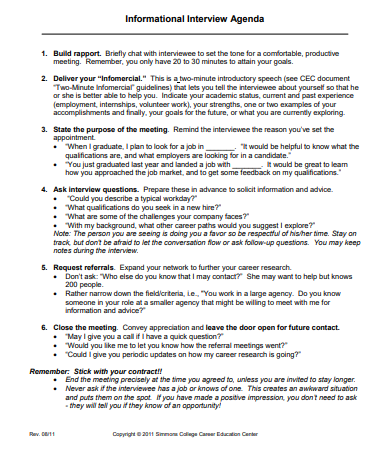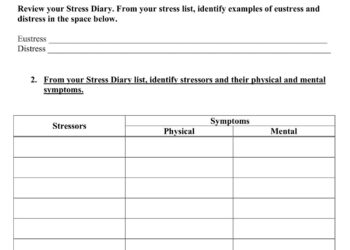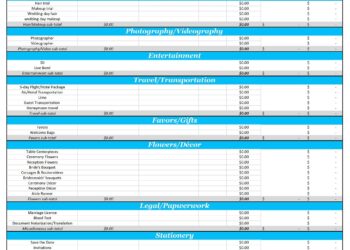Audit Agenda Samples and Examples play a crucial role in assessing the financial health and compliance of a company. To ensure a smooth and comprehensive audit process, it is essential to have a well-structured and organized audit agenda. Browse our collection for effective audit agenda samples and examples in PDF that help you to maintain efficiency during audit management.
An audit agenda is an important tool used to facilitate the process of conducting an internal or external audit. By outlining the scope and objectives of the audit, creating an effective timeline, and planning the activities of all stakeholders involved, an audit agenda helps to ensure that all necessary steps are taken properly, accurately, and promptly. In this article, we will explore the importance of an audit agenda and provide samples and examples in PDF and Word format that helps to streamline your audit processes.
Download Free Audit Agenda Samples
Sample of Internal Audit Agenda |
Agenda of Health and Safety Audit |
Audit Quality Agenda |
Audit Committee Agenda Sample |
Pre-Audit Meeting Agenda |
Sample of Factory Audit Agenda |
On-Site Audit Meeting Agenda Sample |
Sample of Audit Meeting Agenda |
Audit Conference Agenda |
Audit Entry Meeting Agenda |
Audit Proposed Meeting Agenda |
Audit & Risk Committee Agenda |
External Audit Agenda Template |
Model Audit Committee Meeting Agenda |
Supplier Audit Agenda Template |
What Is an Audit Agenda?
An audit agenda is a document that outlines the tasks, objectives, timelines, and resources required for conducting an audit. It serves as a roadmap or guide for auditors, helping them plan and structure their audit engagements effectively. The audit agenda acts as a framework for organizing and managing the audit process, ensuring that all necessary areas are covered and providing a clear direction for auditors to follow. The audit agenda helps provide effective communication between the auditor, stakeholders, and any relevant third parties, ensuring everyone understands their roles during the audit process. Moreover, it keeps an audit on track, allowing timely completion and adherence to quality standards. Companies need to complete their audits efficiently when it comes to financial reporting not only do they need assurance that their books are accurate and reliable, but they also must adhere to any applicable regulations to remain compliant. An audit agenda sets the path to these goals by giving each step in the process its due diligence.
Key Components of an Audit Agenda
The success of an audit engagement relies on careful planning and organization. An essential tool for auditors is the audit agenda, a document that outlines the key components and tasks involved in the audit process. A well-structured audit agenda serves as a roadmap, providing clear direction and guidance to auditors throughout the engagement. It helps ensure that all necessary areas are covered, objectives are achieved, and timelines are met. In this article, we will explore the key components of an audit agenda, shedding light on the fundamental elements that contribute to an effective and efficient audit process. By understanding these components, auditors can create robust agendas that streamline their efforts and enhance the quality of their audit engagements.
- Introduction and Objectives: The agenda typically begins with an introduction that outlines the purpose and scope of the audit. It defines the objectives to be achieved during the audit engagement, such as assessing financial statements, evaluating internal controls, or ensuring compliance with regulations.
- Audit Planning: This section focuses on the preliminary planning activities, including gathering relevant information about the audited entity, understanding its business processes, identifying potential risks, and determining the audit approach.
- Fieldwork: The fieldwork phase involves conducting detailed testing and examination of the audited entity’s records, documents, and transactions. The agenda should allocate specific tasks related to data analysis, sample testing, interviews with key personnel, and documentation review.
- Internal Controls Evaluation: Auditors assess the effectiveness and adequacy of the audited entity’s internal controls during this phase. The agenda should outline the procedures and tasks required to evaluate the control environment, identify weaknesses or gaps, and recommend improvements.
- Audit Findings and Reporting: Once the fieldwork is completed, auditors analyze their findings and prepare the audit report. The agenda should allocate time for compiling and reviewing the audit findings, drafting the report, and ensuring its accuracy and completeness.
- Follow-Up: This section covers activities related to monitoring the implementation of audit recommendations and assessing the progress made by the audited entity in addressing identified issues. The agenda should include tasks for tracking follow-up actions and evaluating their effectiveness.
The structure and content of an audit agenda may vary depending on the type of audit being conducted (e.g., financial statement audit, operational audit, compliance audit, etc.) and the specific requirements of the audited entity. It is important to tailor the agenda to the unique circumstances of each audit engagement to ensure a thorough and efficient audit process.
Types of Audit Agendas
When it comes to conducting audits, different types of engagements require specific approaches and considerations. As a result, various types of audit agendas can be utilized to address the unique characteristics of each audit. These agendas depend on the scope of the audit and the specific needs of the organization being audited. Understanding each type of audit agenda can help you better prepare for your financial review.
1. External Audit Agenda
An external audit agenda is used when an independent third-party auditor examines a company’s financial statements and reports. This type of agenda includes reviewing accounting records, ensuring compliance with applicable standards, verifying accuracy in all transactions, and identifying potential risks or fraud. This type of agenda also requires a thorough review of internal controls and processes to ensure they are operating as intended.
2. Internal Audit Agenda
An internal audit agenda is used when an organization’s staff performs the audit process. This type of agenda focuses on gathering evidence to ensure accuracy in all areas related to the organization’s finances, including budgeting, forecasting, investments, payroll, taxes, and other related activities. Internal audits also examine compliance with laws and regulations as well as adherence to corporate policies and procedures.
3. Operational Audit Agenda
An operational audit agenda focuses on assessing how efficiently operations are running within an organization. This type of audit looks at areas such as workflows, cost management systems, resource utilization, technology management systems, and quality control processes. Operational audits determine whether or not any areas need improvement for operations to run smoothly and efficiently. The goal is to identify potential problems before they become larger issues down the line.
4. Financial Statement Audit Agenda
This type of audit agenda is used to verify all the financials of a company or organization with the taxes. It includes tasks such as risk assessment, testing internal controls, substantive testing of balances, and the preparation of the audit report.
5. Compliance Audit Agenda
A compliance audit agenda is designed to ensure adherence to relevant laws, regulations, and internal policies. It includes tasks like reviewing compliance programs, identifying key compliance areas, testing controls, and reporting on compliance status.
Importance of Audit Agenda
An audit agenda is a vital tool that helps to ensure the success of your audit. It serves to provide structure and organization to the process by breaking it down into smaller, achievable steps while keeping you focused on the main goals. Here we will discuss why having an audit agenda is so important and how it can maximize your efficiency.
- Organization & Structure: An audit agenda helps you to stay organized and structured throughout the auditing process by outlining each step of the way. This helps keep you from getting overwhelmed or sidetracked and allows for more efficient use of time when completing tasks. The agenda should also include specific deadlines for completion, as this will help keep you on track in terms of meeting those deadlines. Additionally, having all tasks outlined in one place makes it easier to refer back to if needed.
- Maximizing Efficiency: Having an effective audit agenda can also help maximize efficiency by allowing for task delegation and collaboration between team members. This gives everyone a clear understanding of their role in the process and encourages everyone to work together towards the same goal. Furthermore, having a timeline with specific deadlines ensures that no one is left behind when it comes time to complete tasks and ensures that nothing falls through the cracks. Lastly, having an audit agenda in place also provides accountability which further promotes efficiency as people are less likely to procrastinate when they know someone else is holding them accountable for their work.
- Comprehensive Coverage: An audit agenda ensures that all relevant areas are covered during the audit. By defining the scope and objectives of the audit, it helps auditors prioritize their activities and allocate resources effectively. This ensures that no critical aspects or risks are overlooked and that a thorough examination of the organization’s operations, financials, and controls is conducted.
- Clear Communication & Quality Assurance: Having an audit agenda is also beneficial in terms of communication between team members and supervisors as it provides clarity on who needs to do what, when it needs to be done, and what will happen next. This allows supervisors to monitor progress easily while ensuring quality assurance along the way since all tasks have been clearly outlined and delegated accordingly. Additionally, having a detailed list of deliverables makes it easier for supervisors to review results quickly so any issues can be addressed before they become bigger problems later down the road.
Steps to Creating an Effective Audit Agenda
An audit agenda is an essential part of any audit process. It lays out the plan for the auditor to follow and ensures that all important aspects of the audit are covered. Creating an effective audit agenda is a critical step in ensuring that no important details are overlooked. Here are five steps to creating an effective audit agenda.
1. Identify Your Objectives
The first step in creating a successful audit agenda is to identify your objectives. What do you hope to accomplish with this audit? Are you looking for compliance issues or other areas where improvement can be made? Once you have identified your objectives, you will be able to create an actionable plan for achieving them.
2. Research Your Subject Matter
After defining your objectives, it’s time to do some research on the subject matter. This includes gathering information about the company being audited, its policies and procedures, and any relevant regulations or laws that apply to its operations. By understanding the context of your audit before beginning, you can ensure that you are following all necessary guidelines throughout the process.
3. Develop a Timeline
Once you have done your research and identified what needs to be done, it’s time to develop a timeline for completing each task. This will help keep everyone on track and ensure that all tasks are completed on time and within budget. Additionally, make sure there is room for flexibility in the schedule so that any unexpected issues can be addressed quickly and efficiently.
4. Draft Your Agenda
Now it’s time to draft your agenda. Start by writing down each task that needs to be accomplished during the audit along with any special instructions or requirements associated with each item (e.g., which documents need to be reviewed). Then go through each item one at a time and assign deadlines for completion as well as who is responsible for completing each task. This will help ensure accountability throughout the process and minimize any confusion or miscommunication between auditors and those being audited.
5. Finalize & Distribute Your Agenda
The final step is to review and finalize your agenda before distributing it among all involved parties. Ask yourself if any items are missing from the list or if anything needs clarification before sending out the document officially this will help ensure accuracy throughout the entire process. Once everything looks good, send out copies of your finalized agenda so everyone knows what they need to do and when they need to do it.
Conclusion
Audit agendas provide a detailed outline for auditors so that they can thoroughly review an organization’s financial information or operational processes accurately and efficiently. Knowing what types of audits exist will help you better understand what you should be looking for when preparing for your own financial review or operational assessment. With the right preparation ahead of time, you can ensure that your audit will be successful in uncovering any potential problems or areas needing improvement in order for your business to continue running smoothly in the future.
Reference Link


